10 Best Social Media Platforms For Internal Communications
In today’s fast-paced and interconnected business landscape, effective internal communication plays a pivotal role in the success of modern organizations. The ability to disseminate information, foster collaboration, and engage employees has become more critical than ever. One of the key drivers revolutionizing internal communications is the emergence of social media platforms.
Social media platforms have transformed the way organizations communicate internally, offering a plethora of tools and features to facilitate seamless information sharing, collaboration, and engagement among employees. These platforms have become invaluable assets for organizations seeking to break down silos, enhance transparency, and foster a culture of open communication.
Overview of the Article
This article explores the top 10 social media platforms that are redefining internal communications within organizations. Each platform possesses unique features and functionalities that contribute to effective and efficient internal communication. By providing an in-depth analysis of these platforms, this article aims to equip readers with the knowledge and understanding necessary to select the most suitable platform for their organization’s needs.
The following sections will delve into each social media platform, discussing its key features, benefits, and limitations. Real-world examples and success stories from organizations that have leveraged these platforms effectively will be provided, showcasing their impact on internal communication.
By the end of this article, readers will have a comprehensive understanding of the top social media platforms for internal communications, empowering them to make informed decisions and revolutionize their internal communication strategies. Let’s dive into the world of innovative platforms that are transforming internal communications within organizations.
1. Slack:
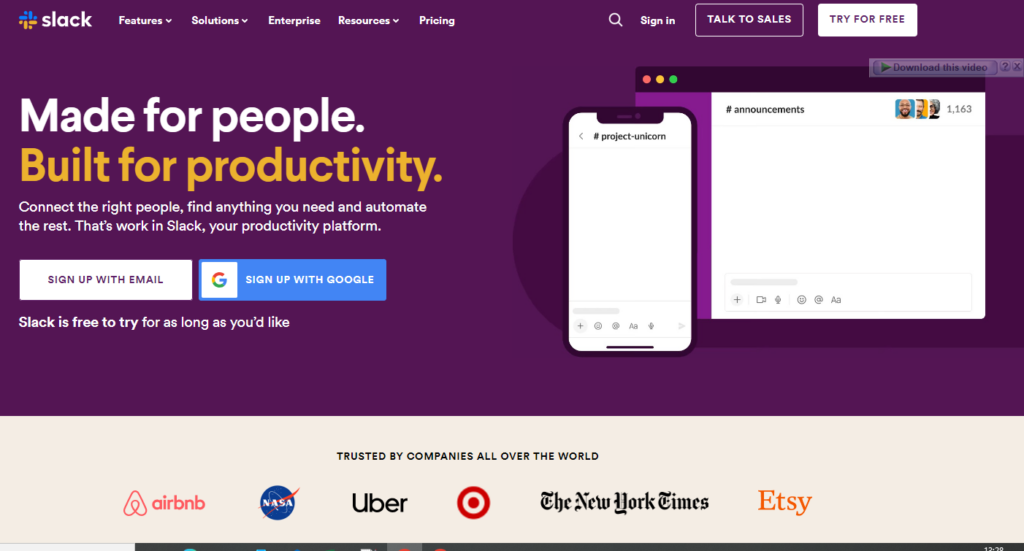
Slack is a widely popular communication platform that has gained immense traction in the business world. It offers a range of features for internal communications, including direct messaging, channels for team collaboration, file sharing, and integrations with various business tools.
Key features and benefits for internal communication:
- Instant messaging: Employees can engage in real-time conversations, facilitating quick decision-making and reducing email overload.
- Channels: Teams can create dedicated channels for specific projects, departments, or topics, ensuring focused discussions and organized communication.
- File sharing: Users can easily share files, documents, and presentations, enabling seamless collaboration and document version control.
- Integrations: Slack integrates with numerous productivity tools, enabling automation, project management, and workflow optimization.
Real-world examples:
- Shopify: The e-commerce giant uses Slack to connect employees across multiple teams, enabling efficient communication and knowledge sharing. It has witnessed improved cross-functional collaboration and reduced email dependency.
- Airbnb: With a globally distributed workforce, Airbnb relies on Slack for real-time communication, allowing teams to coordinate seamlessly and share information efficiently.
Slack’s user-friendly interface, versatility, and extensive integration options make it an excellent choice for internal communications.
2. Microsoft Teams:
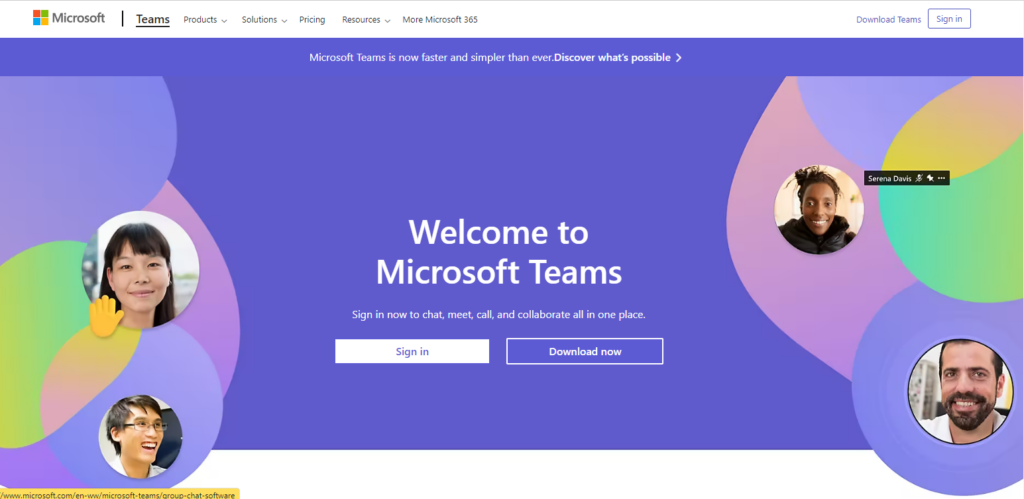
Microsoft Teams is a robust platform designed for collaboration and internal communication. It integrates seamlessly with other Microsoft tools and offers a comprehensive suite of features tailored for teamwork.
Key features and benefits for internal communication:
- Chat and video meetings: Teams can engage in one-on-one or group chats, as well as conduct video conferences for face-to-face interactions.
- Channels and teams: Organizations can create dedicated channels and teams for different projects, departments, or interest groups, ensuring focused discussions and streamlined communication.
- File sharing and collaboration: Users can share files, collaborate on documents in real-time, and track version history, promoting efficient teamwork.
- Integration with Microsoft tools: Teams seamlessly integrates with other Microsoft applications like Word, Excel, and SharePoint, enabling easy access to files and fostering productivity.
Real-world examples:
- General Electric (GE): GE utilizes Microsoft Teams to connect its global workforce, enabling cross-functional collaboration and knowledge sharing. The platform has improved communication and streamlined processes, resulting in increased productivity.
- Siemens: Siemens employs Microsoft Teams for internal communication, creating virtual teams, sharing documents, and facilitating effective collaboration among employees across different locations.
Microsoft Teams’ integration with Microsoft’s productivity suite and its focus on collaboration make it an ideal choice for internal communications in organizations of all sizes.
3. Workplace by Facebook:
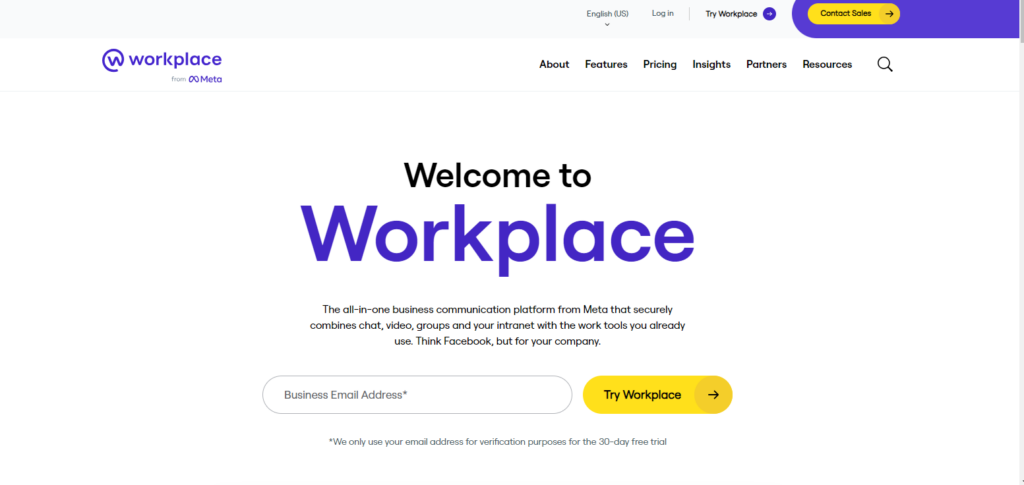
Workplace by Facebook is a social networking platform designed specifically for organizations. It offers a familiar interface similar to Facebook, making it easy for employees to navigate and engage in internal communications.
Key features and benefits for internal communication:
- News Feed and Groups: Employees can share updates, and announcements, and engage in discussions through the News Feed. Groups can be created for teams, projects, or departments, enabling focused communication.
- Live video broadcasts: Organizations can use live video broadcasts to connect with employees in real time, facilitating company-wide announcements and town hall meetings.
- Integration with productivity tools: Workplace integrates with popular productivity tools like Google Drive, Office 365, and more, ensuring seamless collaboration and document sharing.
- Mobile app: The workplace has a mobile app, allowing employees to stay connected and engaged even while on the go.
Real-world examples:
- Starbucks: Starbucks leverages Workplace by Facebook to connect its geographically dispersed workforce, fostering collaboration and information sharing. It has helped streamline communication and facilitate knowledge exchange across the organization.
- Danone: Danone, a multinational food-products corporation, uses Workplace to enhance internal communication and engage its global employees. The platform has improved cross-functional collaboration and employee engagement.
Workplace by Facebook provides a user-friendly and familiar interface, making it an effective choice for organizations looking to leverage social media-like features for internal communications.
4. Yammer:
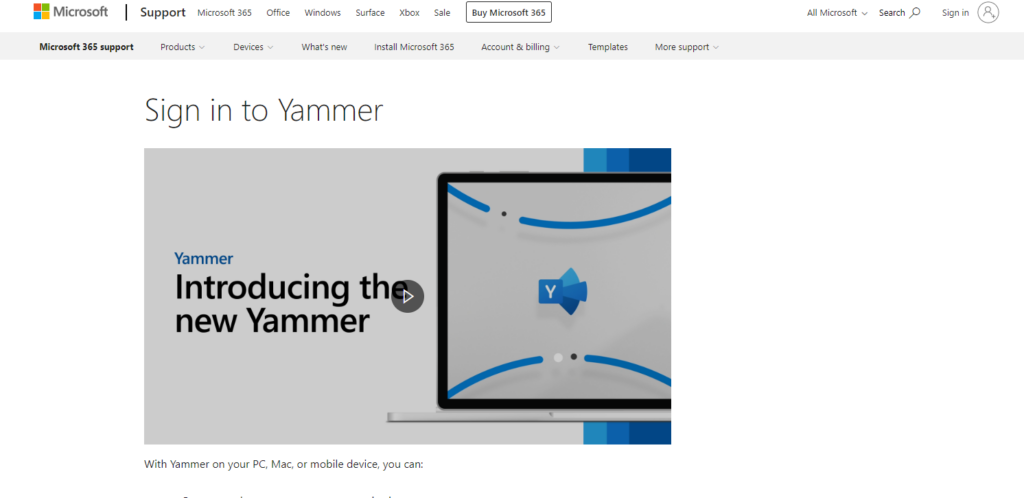
Yammer is a social networking platform specifically designed for internal communication within organizations. It focuses on fostering collaboration, knowledge sharing, and employee engagement.
Key features and benefits for internal communication:
- News Feed and Conversations: Employees can post updates, share ideas, and engage in discussions through the News Feed. Conversations can be organized around topics, projects, or teams.
- Communities and Groups: Yammer allows the creation of communities and groups based on specific interests, enabling like-minded employees to connect and collaborate.
- Knowledge sharing: Users can share documents, files, and resources, promoting knowledge exchange and ensuring that important information is easily accessible.
- Integration with Microsoft 365: Yammer seamlessly integrates with other Microsoft 365 tools, such as SharePoint and Teams, enabling smooth collaboration and content sharing.
Real-world examples:
- Deloitte: Deloitte utilizes Yammer to connect its global workforce, facilitating collaboration, knowledge sharing, and networking. The platform has increased employee engagement and helped build a strong sense of community.
- Renault: Renault leverages Yammer to enhance internal communication across departments and locations, enabling employees to share updates, best practices, and ideas. It has improved cross-functional collaboration and fostered innovation.
Yammer provides a platform for open communication, collaboration, and knowledge sharing, making it a valuable tool for internal communications in organizations.
5. Jive:
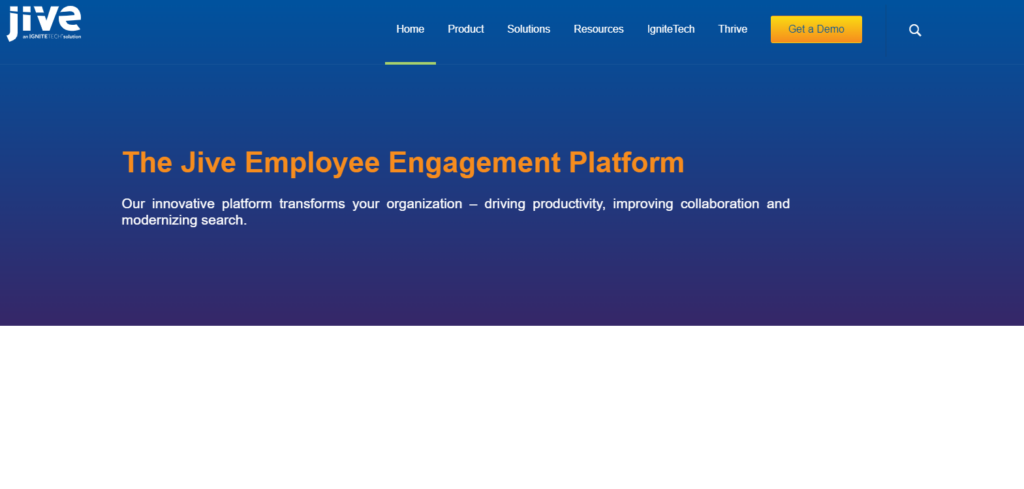
Jive is a comprehensive internal communication platform that combines social networking features with collaboration tools. It aims to connect employees, break down silos, and promote effective communication across the organization.
Key features and benefits for internal communication:
- News and Activity Streams: Jive offers personalized news feeds and activity streams that provide updates on relevant discussions, documents, and projects.
- Groups and Spaces: Users can create groups and spaces for teams, departments, or projects, fostering collaboration and focused communication.
- Document sharing and collaboration: Jive allows users to share files, co-author documents, and track version history, promoting seamless collaboration and knowledge sharing.
- Employee recognition and engagement: The platform includes features for employee recognition, gamification, and social engagement, enhancing employee motivation and participation.
Real-world examples:
- T-Mobile: T-Mobile leverages Jive to facilitate internal communication and collaboration among its employees. The platform has helped improve cross-team collaboration, employee engagement, and knowledge sharing.
- Schneider Electric: Schneider Electric uses Jive to connect its global workforce, enabling employees to collaborate, share best practices, and access important information. The platform has improved communication and streamlined processes across the organization.
Jive’s combination of social networking features, collaboration tools, and employee engagement options makes it a powerful platform for internal communication and fostering a sense of community within organizations.
6. Chatter:
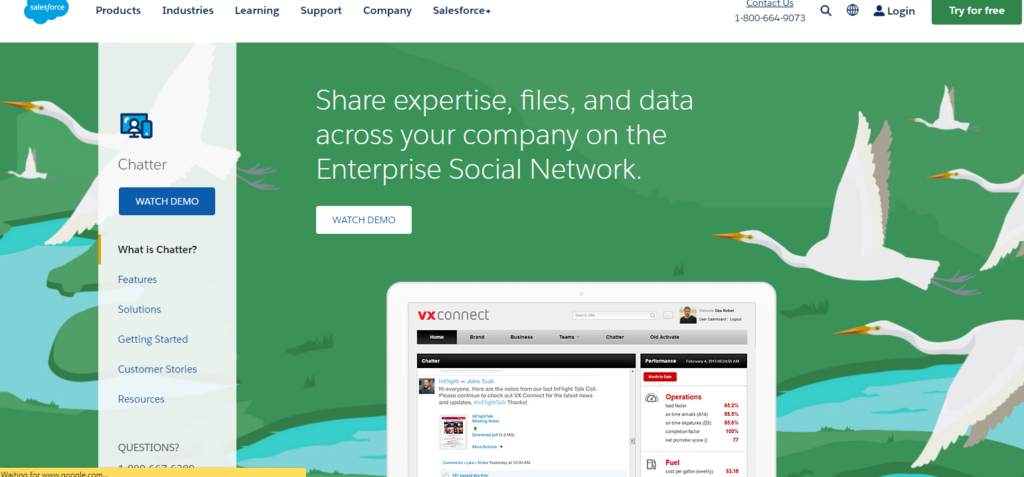
Chatter is an internal communication platform developed by Salesforce, designed to facilitate collaboration, communication, and knowledge sharing within organizations. It is integrated with Salesforce’s CRM platform, making it an ideal choice for Salesforce users.
Key features and benefits for internal communication:
- Feeds and Posts: Chatter provides a feed-based interface where users can post updates, share files, and engage in discussions. This enables real-time communication and keeps employees informed.
- Collaboration and Mentions: Users can collaborate on projects, share documents, and tag colleagues using @mentions, ensuring efficient teamwork and involving relevant stakeholders.
- Expertise and Knowledge Sharing: Chatter allows employees to showcase their expertise, ask questions, and share knowledge, fostering a culture of learning and innovation.
- Integration with Salesforce: Chatter seamlessly integrates with Salesforce’s CRM platform, enabling employees to access customer information, and sales data, and collaborate on deals or customer-related activities.
Real-world examples:
- Virgin America: Virgin America successfully implemented Chatter as its internal communication platform, promoting real-time collaboration, reducing email dependency, and improving employee engagement.
- Pandora: The music streaming company utilizes Chatter to enhance internal communication and collaboration, allowing employees to share updates, discuss projects, and celebrate achievements. It has helped streamline communication and boost employee morale.
Chatter’s integration with Salesforce and its emphasis on collaboration and knowledge sharing makes it a valuable platform for internal communication, particularly for organizations already utilizing Salesforce.
7. Workplace from ServiceNow:
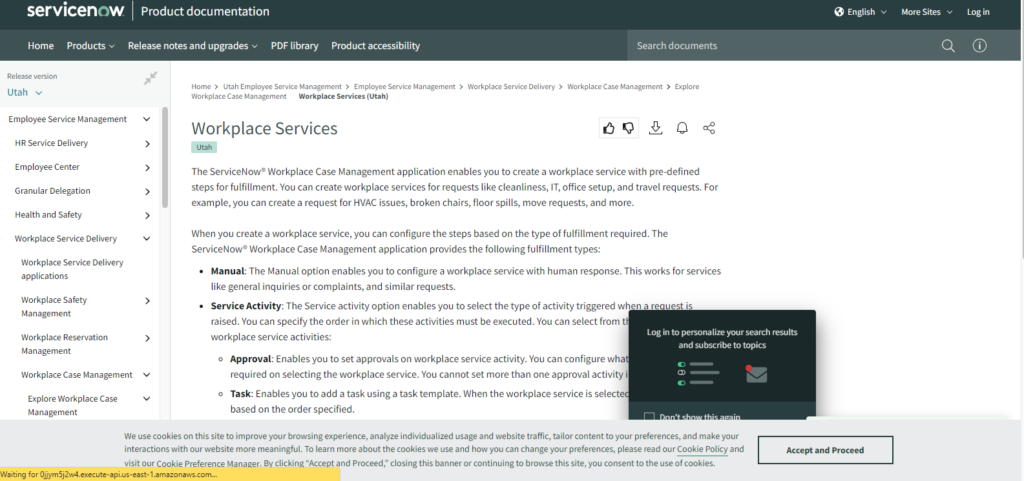
Workplace from ServiceNow is an internal communication platform that focuses on employee engagement, productivity, and collaboration. It provides a centralized hub for communication, ensuring that employees have easy access to important information and resources.
Key features and benefits for internal communication:
- News and Updates: The workplace offers a news feed where important company updates, announcements, and news can be shared with employees.
- Collaboration and Chat: Employees can collaborate in real-time using chat features, enabling quick discussions, problem-solving, and decision-making.
- Employee self-service: The workplace provides self-service capabilities, allowing employees to find information, submit requests, and access resources conveniently.
- Integration with ServiceNow platform: The workplace seamlessly integrates with the ServiceNow platform, enabling employees to access service catalogs, request approvals, and manage tasks from within the communication platform.
Real-world examples:
- Vodafone: Vodafone implemented Workplace from ServiceNow to enhance internal communication and employee engagement. The platform has improved collaboration, streamlined processes, and facilitated a culture of knowledge sharing.
- Deutsche Telekom: Deutsche Telekom leverages Workplace from ServiceNow to connect its diverse workforce, improve communication, and create a unified employee experience. The platform has helped increase employee engagement and productivity.
Workplace from ServiceNow provides a comprehensive internal communication solution with integrated self-service capabilities, making it an efficient platform for organizations looking to enhance communication and streamline employee workflows.
8. Beekeeper:
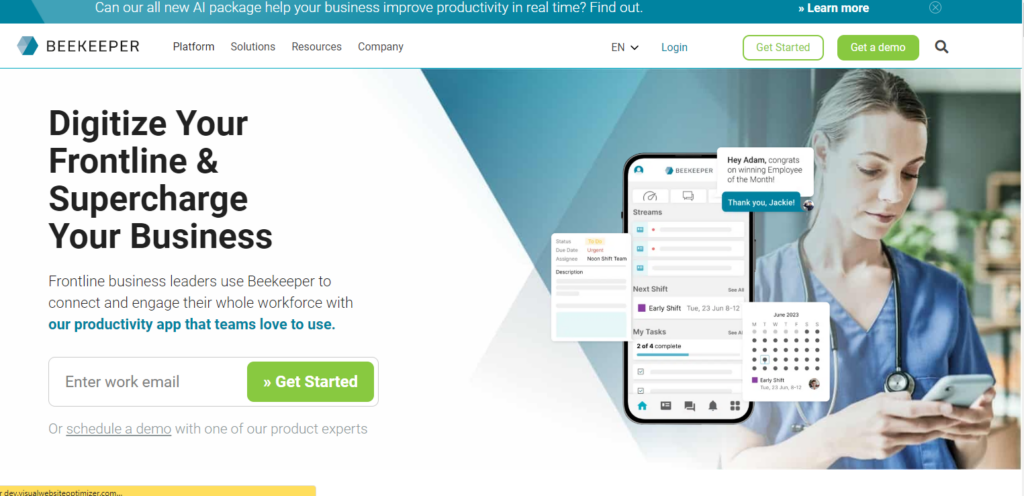
Beekeeper is a mobile-first internal communication platform designed to connect frontline employees and teams. It focuses on improving communication, engagement, and operational efficiency for organizations with a distributed workforce.
Key features and benefits for internal communication:
- Mobile Communication: Beekeeper provides a mobile app that enables real-time communication and collaboration, ensuring that frontline workers stay connected and informed.
- News Feed and Surveys: Organizations can share updates, and news, and conduct surveys through the platform, allowing for two-way communication and feedback.
- Shift Scheduling and Task Management: Beekeeper includes features for shift scheduling, task assignment, and tracking progress, facilitating streamlined operations and team coordination.
- Integration with Operational Systems: The platform integrates with operational systems like HR tools, payroll software, and task management platforms, centralizing information and simplifying workflows.
Real-world examples:
- Hilton: Hilton Hotels implemented Beekeeper to streamline internal communication and improve engagement among its frontline staff. The platform has enhanced information sharing, employee recognition, and operational efficiency.
- Domino’s Pizza: Domino’s Pizza utilizes Beekeeper to connect its dispersed workforce, enabling efficient communication, task management, and real-time updates on orders and operations. It has improved team collaboration and customer service.
Beekeeper’s mobile-centric approach and focus on frontline employee communication make it an excellent choice for organizations seeking to enhance internal communication and operational efficiency.
9. Asana:

While primarily known as a project management platform, Asana also offers robust features for internal communication within teams. It enables seamless collaboration, task management, and communication in a single platform.
Key features and benefits for internal communication:
- Project Collaboration: Asana allows teams to create projects, assign tasks, and collaborate on specific initiatives, ensuring streamlined communication and progress tracking.
- Conversations and Comments: Users can engage in conversations and comment on tasks, fostering communication, and providing clarity on project-related discussions.
- Notifications and Updates: Asana sends notifications and updates to team members, keeping them informed about task assignments, deadlines, and changes.
- Integration with Productivity Tools: Asana integrates with various productivity tools like Slack, Google Drive, and Microsoft Teams, enabling efficient communication and document sharing.
Real-world examples:
- Pinterest: Pinterest utilizes Asana for internal communication and project management, allowing teams to collaborate on different initiatives and track progress. It has improved cross-functional coordination and productivity.
- TED: TED leverages Asana to enhance internal communication and task management, ensuring seamless coordination across various departments and teams. The platform has improved workflow efficiency and project visibility.
Asana’s combination of project management and internal communication features makes it a valuable platform for organizations seeking effective communication and collaboration within teams.
10. Jostle:
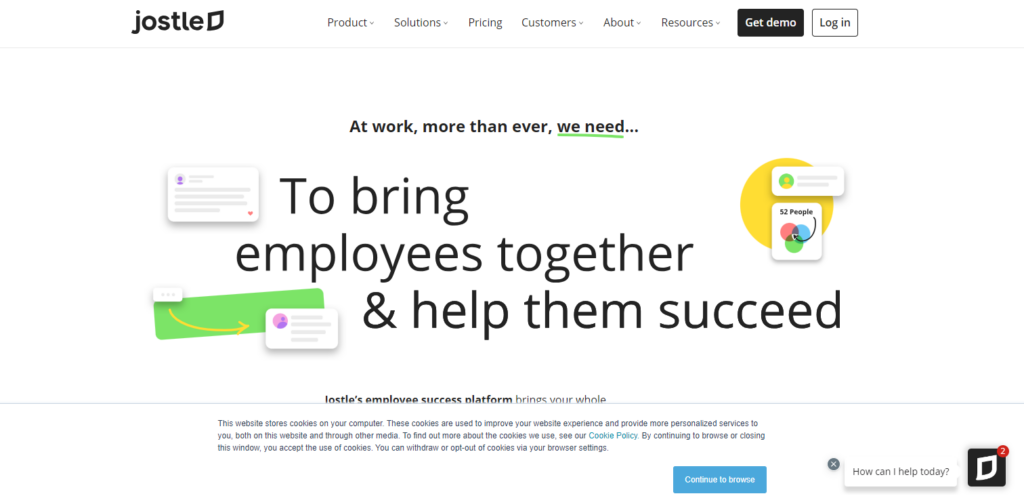
Jostle is an internal communication platform designed to foster engagement, collaboration, and alignment within organizations. It focuses on creating a sense of community and enabling transparent communication across teams and departments.
Key features and benefits for internal communication:
- News and Announcements: Jostle provides a central hub for sharing company news, updates, and announcements, ensuring that employees stay informed.
- Employee Directory and Profiles: The platform includes an employee directory with individual profiles, facilitating connection and fostering a sense of community within the organization.
- Discussion Forums and Surveys: Jostle allows employees to participate in discussion forums, share ideas, and provide feedback through surveys, encouraging open communication and collaboration.
- Recognition and Rewards: The platform includes features for employee recognition and rewards, promoting a positive work culture and boosting employee morale.
Real-world examples:
- WD-40 Company: WD-40 Company implemented Jostle to enhance internal communication, employee engagement, and alignment across its global workforce. The platform has improved cross-functional collaboration, knowledge sharing, and employee recognition.
- Hootsuite: Hootsuite leverages Jostle as its internal communication platform to connect its distributed workforce, promote transparency, and foster a sense of belonging. The platform has improved employee engagement and streamlined communication across the organization.
Jostle’s focus on creating a connected and engaged workforce, along with its range of internal communication features, makes it a strong choice for organizations looking to strengthen collaboration and community within their teams.
These ten social media platforms offer diverse features and benefits for internal communication in organizations. Depending on an organization’s specific needs and preferences, they can choose the platform that best aligns with their communication goals, team structure, and overall organizational culture.
Bonus
Bonus 1: Workplace Culture Amp:
Workplace Culture Amp is a unique internal communication platform that combines employee engagement surveys and communication tools. It aims to foster a positive workplace culture, empower employees, and drive organizational success.
Key features and benefits for internal communication:
- Employee Surveys: Workplace Culture Amp allows organizations to conduct employee engagement surveys, gather feedback, and measure sentiment, providing valuable insights for internal communication strategies.
- Communication and Collaboration: The platform offers communication tools, including news feeds, channels, and direct messaging, to facilitate open dialogue, transparent communication, and collaboration among employees.
- Action Planning and Insights: Workplace Culture Amp provides actionable insights and analytics based on survey data, enabling organizations to identify areas of improvement and develop effective action plans.
- Pulse Surveys: Alongside annual surveys, pulse surveys can be conducted to regularly check the pulse of employee sentiment, address concerns, and make timely improvements.
Real-world examples:
- Airbnb: Airbnb uses Workplace Culture Amp to assess employee engagement, collect feedback, and drive continuous improvement. The platform has helped Airbnb create a more inclusive and positive workplace culture.
- Slack: Slack utilizes Workplace Culture Amp to measure employee engagement and satisfaction, enabling the company to identify trends, address challenges, and strengthen internal communication initiatives.
Workplace Culture Amp’s unique integration of employee surveys with internal communication tools makes it an excellent platform for organizations focused on nurturing a positive work culture and driving employee engagement.
Bonus 2: Microsoft SharePoint:
Microsoft SharePoint is a widely used platform for content management, collaboration, and internal communication within organizations. It offers a range of features to support document sharing, intranet portals, and team collaboration.
Key features and benefits for internal communication:
- Document Management: SharePoint allows for centralized document storage, version control, and access permissions, ensuring secure and efficient document sharing within teams.
- Intranet Portals: Organizations can create customized intranet portals using SharePoint, providing employees with a centralized hub for news, announcements, company resources, and team collaboration.
- Team Sites and Communication Sites: SharePoint offers team sites and communication sites, where teams can collaborate, share updates, and engage in discussions, fostering internal communication and knowledge sharing.
- Integration with Microsoft 365: SharePoint seamlessly integrates with other Microsoft 365 tools, such as Teams and Outlook, enabling efficient communication, document sharing, and collaboration.
Real-world examples:
- Starbucks: Starbucks utilizes SharePoint as its internal communication and collaboration platform, providing employees with a centralized intranet portal for news, resources, and team collaboration. It has improved information sharing and streamlined communication across the organization.
- Accenture: Accenture leverages SharePoint to enhance internal communication and knowledge sharing among its global workforce. The platform has facilitated collaboration, document sharing, and improved access to company-wide information.
SharePoint’s robust document management capabilities, intranet portals, and integration with Microsoft tools make it a versatile platform for organizations looking to streamline internal communication and collaboration.
These two bonus platforms provide additional options for organizations seeking effective internal communication solutions, tailored to their specific needs and requirements.
Conclusion
Revolutionize your internal communication and drive organizational success with the right social media platform! In this article, we explored the top 10 platforms that offer unique functionalities and benefits.
Consider factors like features, compatibility, ease of use, and pricing when selecting the perfect platform. The right choice can boost productivity, streamline communication, and enhance employee engagement and collaboration.
Remember, tailor your decision to your organization’s specific needs and goals. Conduct trials and gather employee feedback for a successful implementation.
In conclusion, unleash the power of social media platforms to transform your internal communication strategy. Connect your workforce, foster collaboration, and propel your organization to new heights of productivity and success. Choose wisely and communicate brilliantly!

